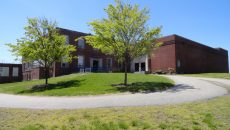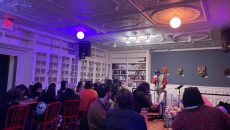Michaela Goss
Connector Editor
Both students and faculty said that UMass Lowell needs to take more steps to promote racial diversity and acceptance throughout the campus for both American-born and international students.
The UMass Lowell community includes members from many diverse backgrounds, and some said this University has helped them feel accepted. Yet other students and faculty said that the curriculum needs to become more inclusive and the overall behavior needs to be more accepting in order to improve the experience for them here.
“I think there’s a big lack of diversity here,” said junior Jasmine Polanco. “It was very difficult for me to adjust to the whole campus because…I had to wait until Wednesdays to go to the [Latin American Student Association] in order to see my culture.”
Polanco and senior and graduate student Carlos Gabriel said that they felt there was little representation here for Hispanic students, including within the faculty.
“In this school, I haven’t had a Hispanic professor,” said Gabriel. “It’s a different feeling when you can relate to your professor, and you can see yourself being that leader.”
Faculty members also said they feel diversifying faculty is important, including English professors Keith Mitchell and Sue Kim.
“As a minority faculty member, being the face and being out there is showing people that the University does have diversity and is working towards having more diverse faculty and students,” said Mitchell. “It’s important for minority students to see other faculty members or people in administration who look like them.”
Polanco and Gabriel said they came from a diverse community college, so transferring to a university lacking in diversity would complicate their studies or make them feel out of place. They also said that Latino diversity was not something the University promoted well.
Mitchell has been here for almost 14 years, and Kim has been here for six. When applying to work here, Kim said having diversity was fundamental. Mitchell said he previously worked at a university with almost no diversity, and it was important to come here and see diverse students.
“Even at that time…the University was making great inroads into hiring more diverse faculty members and also having a diverse student population,” he said.
Mitchell said he knew then that Lowell was “a hub of immigration” from its beginning, as did Kim, and this was a draw for them. This even holds true today, as the University has many students under Deferred Action for Childhood Arrivals (DACA).
“[DACA] makes undocumented students or residents somewhat documented for at least two years,” said Gabriel. “In the rhetoric of our now-president in regards to repealing DACA and deporting the 11 million undocumented folks who are here, I felt it was time for me to stand up.”
Gabriel and Polanco said this is important to them. Along with Kim, they both took part in creating the UMass Lowell Sanctuary Campus Petition, which would benefit DACA students and make UMass Lowell a sanctuary campus, which is similar to the idea of a sanctuary city.
“What it means specifically…is that administration, including campus police, will not turn over immigration status or information to the federal immigration and customs enforcement without a court order,” said Kim.
Kim said it parallels the idea of sanctuary cities, meaning that local law enforcement cannot enforce federal immigration policy.
“Just at a basic human level, everyone in our community should feel welcome and valued and actually be able to be here,” said Kim.
Polanco said making the University a sanctuary campus would keep DACA students safe on campus and protect them so they can continue their education. She said education is important to her, and she and Gabriel said they feel the University could help promote diversity more through the curriculum.
“I think one of our pillars here is to make more well-rounded students and more worldly students,” said Gabriel. “And I think that the curriculum has to reflect those morals to make well-rounded individuals.”
Some faculty members are using their own classes to help improve the curriculum. Mitchell teaches a variety of literature classes and said he tries to make them as diverse as he can. Yet Kim, who is also the co-director of the Asian American Studies Center, said there is room for improvement, especially in regards to Asian-American studies.
“We don’t have much in the way of ethnic studies here, but I think that the administration is behind some of these initiatives,” said Kim. “But we have some work to do.”
Because Lowell is a diverse city itself, UMass Lowell would do well to follow in the city’s footsteps in order to help all students and faculty to feel accepted.
“When I saw brown faces, and people with blue hair, and this vibrant community of students who were all here for the same reason, but looked so different from each other…I’m like: this is where I want to be,” said Mitchell.




Pingback: The race for diversity and acceptance on campus – Michaela Goss